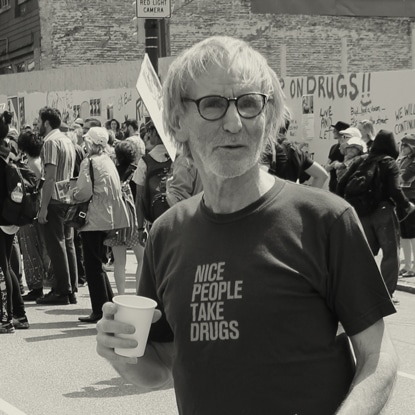Supervised injection sites help save lives and protect communities. This was the conclusion of over 30 research studies on Vancouver’s own supervised injection site known as Insite. And Canada’s Supreme Court agreed in September 2011, ordering the federal Minister of Health to grant a section 56 exemption to the Controlled Drugs and Substance Act to allow Insite to continue to operate.
To scale up harm reduction and support the development of similar services throughout the province, the BC Ministry of Health has now revised its Guidance Document for Supervised Injection Services. Written for health care professionals, it provides advice to health authorities and other organizations considering supervised injection services in their local areas.

At a recent public forum in Victoria, BC, Kenneth Tupper of the B.C. Ministry of Health affirmed the value of supervised injection as part of a “comprehensive program of harm reduction services.”
“The courts have ruled that supervised injection is a valuable approach to health care,” Tupper said, “and the new Guidance Document affirms the province’s support of these services.”
The “guidance document” could seem daunting for the uninitiated. It spells out a range of issues that should be covered by any organization considering a supervised injection site. This includes extensive knowledge of the local services, rates of HIV and Hepatitis C and any available estimates of drug use patterns. Interested organizations will also need to provide a detailed description of the proposed service and demonstrate how it will be consistent with the principles of harm reduction as spelled out by the B.C. Ministry of Health documents.
According to provincial policy, anyone who wants to offer this service will need to consider how they will sustain the support of local groups like medical health officers, police departments and other potentially interested groups. They will also need to plan services to be offered in conjunction with supervised injection even if the proposed supervised injection site is small or mobile and carefully consider how client data will be collected and how issues like the risks of substance use and expectations for conduct at the service are to be communicated and documented.
‘Harm reduction’ refers to policies, programs and practices that aim to reduce the negative health, social and economic consequences of using legal and illegal psychoactive drugs, without necessarily reducing drug use. Scaling up harm reduction for individuals, families and communities is core to the work of the CDPC.
We hope you will join us and help spread the word about the importance of services like supervised injection and help us scale up harm reduction in our communities.


















